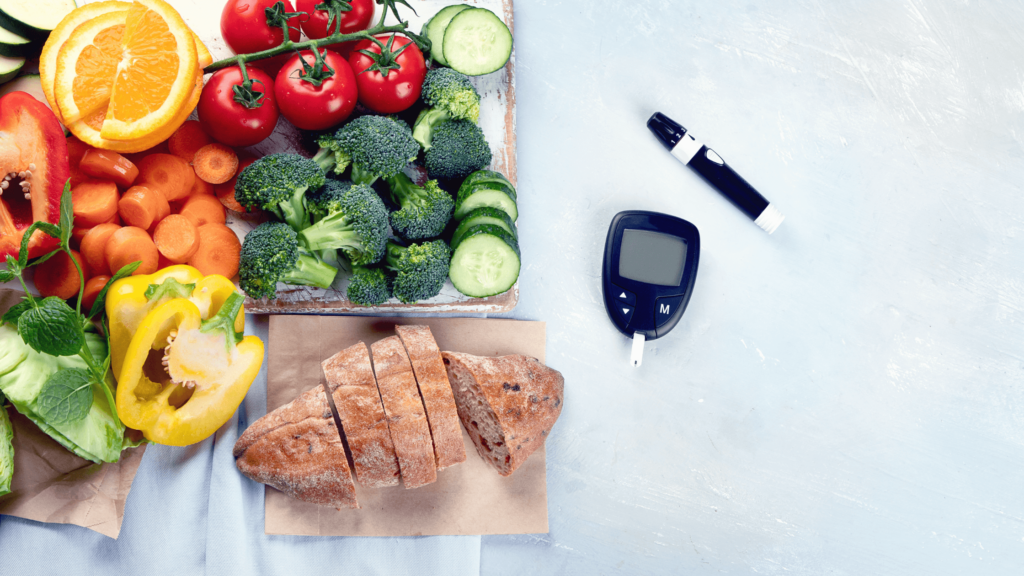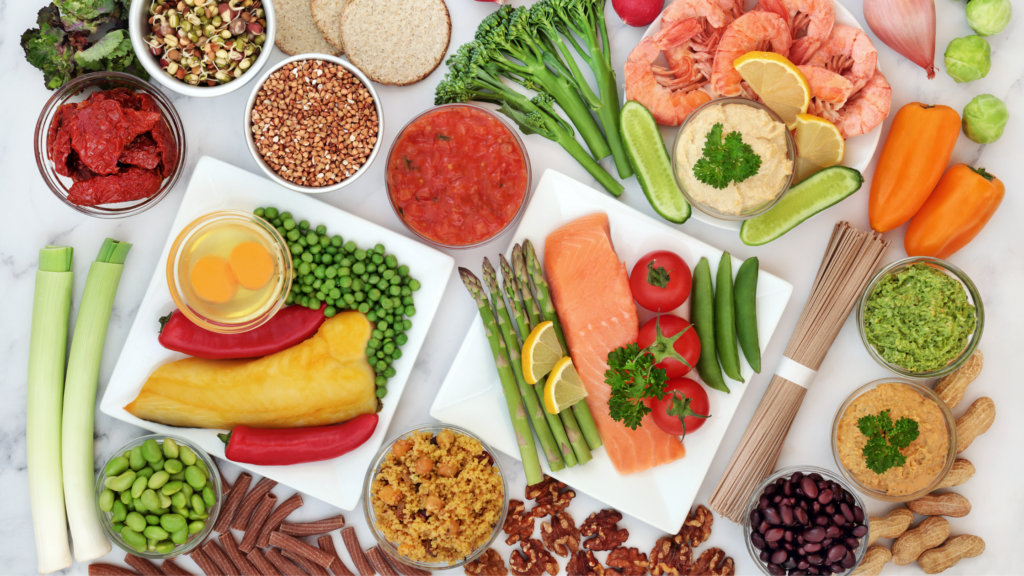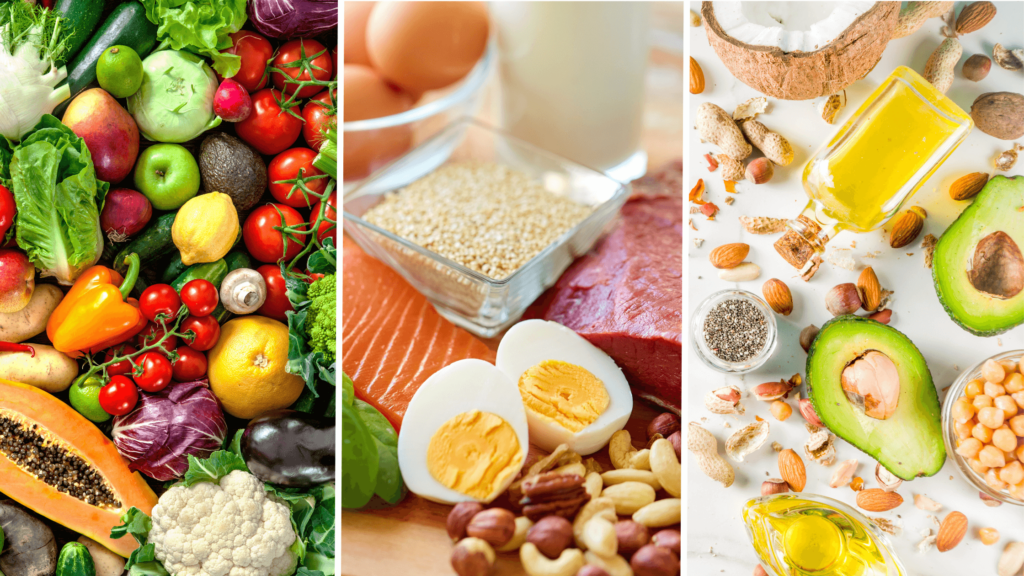The glycemic index (GI) measures how quickly foods raise blood glucose levels, which is crucial for understanding how different carbohydrates impact health. Factors like ripeness, cooking method, and nutritional profile affect the glycemic index of foods, altering their impact on blood sugar. Knowing the GI of foods can help individuals, particularly those with diabetes, make informed dietary choices and improve blood sugar regulation.
Quick look
- The glycemic index measures food’s impact on blood sugar levels, with foods scored as low, medium, or high GI.
- Low GI foods (55 or less) have a smaller impact on blood glucose, while medium (56-69) and high GI foods (70+) cause faster rises in blood sugar.
- Ripeness, cooking methods, types of sugar, processing, and nutritional content affect the GI of foods.
- A low-glycemic diet may help improve blood sugar control, support weight loss, manage cholesterol levels, and reduce diabetes risk.
What is the glycemic index?

The glycemic index is a numerical scale that categorizes carbohydrates based on how they affect blood sugar levels. Foods are scored based on the rate at which they raise blood glucose levels compared to pure glucose, which has a GI of 100.
Foods fall into three categories:
- Low: 55 or below
- Medium: 56-69
- High: 70 or higher
Low-GI foods are digested and absorbed more slowly, leading to a gradual rise in blood sugar, while high-GI foods cause rapid increases in blood sugar.
Understanding GI is particularly beneficial for people with diabetes, as it helps them manage blood sugar more effectively by selecting foods that lead to fewer spikes in glucose levels.
What affects the GI of food?
Several factors determine a food’s GI score, and knowing these can help you make choices for stable blood sugar control:
Ripeness
The ripeness of fruits and vegetables affects their glycemic index. As produce ripens, its starches gradually convert to sugars, resulting in a higher GI. For example, a green banana has a lower GI than a ripe one because the carbohydrates in an unripe banana are in a more complex form, taking longer to digest. For those watching their blood sugar, choosing fruits and vegetables at a less ripe stage may be helpful.
Cooking method
How food is prepared also influences its GI. Cooking processes that break down food structures, such as boiling or baking, can raise a food’s GI by making its carbohydrates more digestible. For instance, mashed potatoes have a higher GI than boiled potatoes, as the mashing process increases the surface area, allowing enzymes to access starches more easily. Steaming or lightly cooking vegetables can help maintain a lower GI than roasting or frying.
Types of sugar
The type of sugar in food impacts its GI score. Different sugars have unique effects on blood glucose; for example, fructose has a lower GI than glucose, so foods higher in fructose may cause a slower rise in blood sugar. Additionally, foods containing a mix of sugars may have varying GI values. For instance, honey has both glucose and fructose, which can lead to a more moderate GI compared to pure glucose.
Processing methods
Processed foods generally have higher GI scores than their unprocessed counterparts due to the removal of fiber and other nutrients that slow digestion. For instance, white bread has a higher GI than whole-grain bread because it lacks the fiber content found in whole grains. This makes processed foods less ideal for those looking to manage blood sugar, as they lead to quicker glucose spikes.
Nutritional profile
The presence of fiber, protein, and fat can lower a food’s GI because these nutrients slow down digestion, gradually releasing glucose into the bloodstream. Foods rich in fiber, like beans, or those that contain protein, like yogurt, tend to have lower GI values. Adding protein or healthy fats to meals, such as nuts or avocado, can help reduce the overall GI impact of a meal.
Understanding glycemic load
While the glycemic index gives insights into how quickly food raises blood sugar, glycemic load (GL) considers both the GI and the quantity of carbohydrates in a standard serving. A food may have a high GI but a low GL if the carbohydrate content is low.
For instance, watermelon has a high GI but low GL due to its high water content and relatively low carbohydrate count per serving. This dual measure helps people understand a food’s actual effect on blood sugar, which is particularly useful for managing diabetes and maintaining balanced blood glucose levels.
Health benefits of a low glycemic diet

Low-glycemic diets are associated with various health benefits, supporting blood sugar control, weight management, and more.
1. Better blood sugar regulation
A low-GI diet can help stabilize blood glucose levels by preventing rapid spikes and crashes. For individuals with diabetes, managing glucose levels is essential, and low-GI foods, which are digested more slowly, lead to a more stable release of glucose. This can help reduce the risk of hypoglycemia and improve overall blood glucose control.
2. Weight loss
Low-GI foods can support weight management by providing longer-lasting energy and promoting satiety. Unlike high-GI foods that are quickly digested and can lead to overeating, low-GI foods release energy gradually, helping curb cravings and reducing the desire for frequent snacks. Over time, this steady energy release can support healthier eating patterns and contribute to weight loss efforts.
3. Improve cholesterol levels
Studies suggest that low-GI diets may improve cholesterol profiles by reducing LDL cholesterol levels while raising HDL cholesterol, which benefits cardiovascular health. The slower digestion of low-GI foods may reduce the body’s demand for insulin, which can positively affect lipid metabolism, helping to maintain healthier cholesterol levels.
4. Control appetite
Low-GI foods help control appetite by prolonging feelings of fullness, making it easier to manage portion sizes and reduce snacking. Since these foods take longer to break down, they provide sustained energy without causing a quick drop in blood sugar that can lead to hunger soon after a meal. This appetite control benefits people aiming to maintain a healthy weight and avoid overeating.
5. Reduce diabetes risk
Research indicates that low-GI diets are linked to a lower risk of developing type 2 diabetes. By reducing insulin spikes and providing steady glucose levels, low-GI foods can help protect against insulin resistance, a key factor in type 2 diabetes development. Numerous studies suggest that regular consumption of low-GI foods may support metabolic health and reduce diabetes risk, particularly for those with a family history of the condition or prediabetes.
Glycemic index of common fruits and vegetables
Below is a summary of the GI and GL values for some common fruits and vegetables.
Fruits
| Fruit | Serving size | Glycemic index (GI) | Glycemic load (GL) |
| Apple | 120g (1 medium) | 39 | 6 |
| Banana | 120g (1 medium) | 62 | 16 |
| Orange | 120g (1 medium) | 40 | 4 |
| Peach | 120g (1 medium) | 42 | 5 |
| Pineapple | 120g (1 cup chopped) | 59 | 7 |
| Grapes | 120g (1 cup) | 59 | 11 |
| Pear | 120g (1 medium) | 43 | 5 |
| Strawberries | 120g (1 cup, sliced) | 41 | 1 |
| Mango | 120g (1 cup, sliced) | 51 | 8 |
| Plum | 120g (2 medium) | 39 | 2 |
Vegetables
| Vegetable | Serving size | Glycemic index (GI) | Glycemic load (GL) |
| Carrot | 120g (1 medium) | 35 | 2 |
| Broccoli | 120g (1 cup, chopped) | 15 | 1 |
| Pumpkin | 80g (½ cup, cooked) | 75 | 3 |
| Green peas | 80g (½ cup) | 51 | 4 |
| Zucchini | 120g (1 cup, sliced) | 15 | 1 |
| Cucumber | 120g (1 cup, sliced) | 15 | 0 |
| Bell pepper | 120g (1 cup, sliced) | 15 | 1 |
| Eggplant | 80g (½ cup, cooked) | 15 | 1 |
| Tomato | 120g (1 medium) | 15 | 1 |
| Corn | 150g (1 cup kernels) | 52 | 15 |
8 principles of low glycemic eating

Adopting a low-glycemic eating plan can be simple with these guidelines:
1. Choose non-starchy vegetables
Non-starchy vegetables, such as leafy greens, broccoli, and tomatoes, are ideal for low-GI diets due to their low carbohydrate content and rich fiber, vitamins, and minerals supply. These vegetables have minimal effects on blood sugar, helping to prevent spikes and keep energy levels steady throughout the day.
Beyond blood sugar regulation, the high fiber content aids digestion and supports heart health, while the antioxidants in vegetables like broccoli and tomatoes contribute to cellular health and reduce inflammation. Including a variety of non-starchy vegetables in meals can also make the diet more satisfying and nutrient-dense, supporting long-term wellness.
2. Eliminate processed foods
Whole foods, like whole grains, fresh fruits, and vegetables, preserve their natural fiber and nutrients, making them excellent choices for controlling blood sugar. In contrast, processed foods often lack these essential components, which results in a higher glycemic index and the potential for rapid spikes in blood sugar.
Whole grains such as oats or brown rice release glucose gradually, which helps sustain energy and prevents sudden drops or cravings. Additionally, whole foods offer vital antioxidants, vitamins, and minerals that support metabolic health. Prioritizing whole foods over refined options can significantly improve blood sugar control and promote overall wellness.
3. Limit refined grain products
Refined grains, like white rice and bread, lack the fiber and nutrients that whole grains provide, causing them to digest quickly and leading to rapid spikes in blood glucose. This quick release of glucose can create bursts of energy followed by crashes, which isn’t ideal for stable blood sugar levels or performance and productivity.
Switching to whole grains such as quinoa, oats, and brown rice supports sustained energy and maintains a steadier glucose release due to their lower glycemic index. These whole grains also add fiber, vitamins, and minerals that refined options lack, benefiting digestion and overall health.
4. Limit sweets
Sweets and sugary snacks typically have a high glycemic index, causing blood sugar to rise quickly after consumption. This leads to a short energy spike followed by a rapid drop. Regularly indulging in these high-GI foods can make it harder to keep blood sugar levels steady, which is especially challenging for people managing conditions like diabetes.
Reserving sweets for special occasions can help reduce these spikes while still allowing occasional treats. When craving something sweet, choosing fruits instead can provide a healthier option with natural sugars, fiber, and essential vitamins, helping to satisfy a sweet tooth with far less impact on blood sugar.
5. Eat healthy, high-quality proteins
Including proteins like lean meat, fish, and legumes in meals can effectively maintain stable blood sugar levels. Protein digests more slowly than carbohydrates, which helps moderate the rate at which glucose enters the bloodstream. This slower digestion also promotes a feeling of fullness, reducing the likelihood of reaching for high-GI snacks shortly after a meal.
Protein also supports muscle repair and energy maintenance, making it an essential nutrient for overall health. Adding protein to each meal is a simple way to balance blood sugar and ensure a steady energy supply throughout the day.
6. Choose foods with healthy fats
Healthy fats, like those found in avocados, nuts, and olive oil, play an important role in managing blood sugar levels by reducing the glycemic impact of meals. These fats slow digestion, leading to a steadier release of glucose into the bloodstream, which helps prevent sharp sugar spikes.
Adding these foods to recipes enhances flavor and keeps you satisfied for longer periods, which can be beneficial for portion control and avoiding frequent snacking. Fats are also critical for absorbing fat-soluble vitamins like A, D, E, and K, supporting overall nutritional balance. Simple adjustments like adding nuts to salads or cooking with olive oil can significantly affect meal quality and blood sugar stability.
7. Don’t skip breakfast
Starting the day with a balanced breakfast that includes fiber, protein, and healthy fats supports steady blood sugar levels and reduces the likelihood of intense mid-morning hunger. Fiber helps slow glucose absorption, while protein and fats create a feeling of fullness, keeping energy levels stable and minimizing cravings.
Skipping breakfast often leads to overeating later in the day, which can cause blood sugar spikes and crashes. A well-rounded morning meal also primes the body and mind for sustained focus, promoting productivity and reducing fatigue. Consistently eating breakfast can be a simple yet powerful step for improving blood sugar control.
8. Eat when you’re hungry, stop when you’re full
Listening to hunger cues and stopping when satisfied is key to maintaining balanced blood sugar levels. Mindful eating can improve portion control, as it helps avoid the habit of eating too quickly or past fullness. This approach encourages a healthier relationship with food, focusing on satisfying true hunger rather than emotional or habitual eating, often leading to blood sugar spikes.
Eating slowly and savoring each bite also allows time for the body’s natural signals to register fullness, reducing the chance of overconsumption. Over time, mindful eating can support overall health and make balanced meals more effective for managing blood sugar.
Bottom line
In an industry where the diabetes rate is relatively high, focusing on low-glycemic eating can empower individuals to manage blood sugar, reduce health risks, and support overall well-being. Incorporating low-GI foods into daily meals may improve blood glucose regulation, control appetite, and promote a balanced diet without drastic restrictions. By focusing on whole, minimally processed foods and combining them with healthy fats and proteins, a low-glycemic diet is both sustainable and satisfying.
For more insights on managing diet and wellness, subscribe to our weekly newsletter to stay updated with tips on nutrition and other wellness-related topics.


